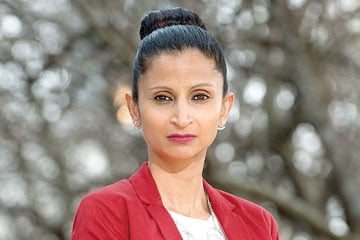
A recent Ontario court decision saw a judge overrule a jury’s award to a woman involved in a motor vehicle crash because he felt the case didn’t meet the threshold for permanent and serious injury.

A recent Ontario court decision saw a judge overrule a jury’s award to a woman involved in a motor vehicle crash because he felt the case didn’t meet the threshold for permanent and serious injury.
In Debruge v. Arnold, 2018 ONSC 2357, the Divisional Court dismissed the appeal regarding Justice Mark Edwards’ original decision that despite the fact that a jury had awarded Diana Arnold with $75,000 in general damages, $8,300 for future housekeeping and $5,000 for future medical rehabilitation expenses, she had not satisfied the threshold of having suffered permanent and serious injury.
As a result of the threshold motion, during which only one expert — who was deemed to be biased — had been brought forward instead of the treating physician, the claims for general damages and future medical expenses were eliminated, leaving Arnold with only the $8,300 award for future housekeeping.
Lawyers say the case shows how careful counsel must be regarding their choice of expert witnesses, as they can undermine the case in the eyes of the judge.
“It emphasizes the importance [of] ensuring your expert is balanced,” says Linda Matthews, partner with Matthews Abogado LLP in Toronto, who was counsel for the defence in the matter. “The last thing that you would want after going through a three-week jury trial and years of litigation [is that] you put one expert on the stand and the trial judge finds that the expert is biased and doesn’t give their opinion any weight. That’s the end of the case.”
Matthews adds that this circumstance applies to both plaintiff and defence, meaning lawyers need to ensure that they have properly prepared their expert and that the expert is aware that their opinion has to be perceived as being balanced and helpful to the court.
“[T]he problem was not brought about by calling evidence in support of the threshold from a retained expert as opposed to a treating physician. Rather, the problem arose from proffering evidence solely through a retained expert whose evidence was ultimately rejected by the court,” said the ruling.
Sudevi Mukherjee-Gothi, partner with Pallett Valo LLP in Toronto and head of the firm’s insurance defence group, says the ruling gives more clarity to both insurance defence lawyers and personal injury lawyers.
“Recently, there have been some cases that said sometimes you don’t even have to call a treating doctor if you have people that can speak to the impact that it’s had on the individual’s life in terms of not being able to function to the same degree — a judge can take that into consideration,” says Mukherjee-Gothi.
Matthews says the original ruling stated that the plaintiff had returned to work after the accident and was able to do most of her job functions, with the exception of filing documents above shoulder height owing to a frozen shoulder, meaning that it was more likely to be a case of minimal impairment as opposed to permanent and serious injury.
Matthews also notes that, for at least a year post-accident, the plaintiff had been treated by a nurse practitioner who referred her to an orthopedic surgeon on top of her family physician. Before trial, the original ruling stated the plaintiff saw another orthopedic surgeon, Dr. Fern.
Rose Leto, partner with Neinstein LLP in Toronto, says that in the decision the court is asserting that treating physicians are in the best position to comment on the plaintiff’s condition.
Leto says that when it comes down to the threshold, the treating physician is in the best position to comment on the difference in the person’s life before and after the accident. She adds that, in this particular circumstance, the court said that the plaintiff’s expert witness only saw the plaintiff for an hour and was an advocate.
“They’ve only had a limited amount of interaction with the plaintiff and aren’t in the best position to assess them when you take into [account] the pre- and post-accident state, and that’s ultimately what the threshold is designed to look at,” says Leto.
Andrew Iacobelli of Iacobelli Law Firm PC in Toronto, who acted for the plaintiff in the matter, says the decision shows the inherent danger of the threshold, given that the jury heard evidence for three weeks and, with its verdict, stated that the claim has merit.
“The insurance company gets a second bite at the apple,” says Iacobelli. “In most cases, it doesn’t really matter because where the judge has found that the plaintiff has not met threshold, the jury verdict and the judge’s finding of threshold are in unison because the award is nominal. In this case, it was almost $90,000.”
Iacobelli noted that, in this case, the judge gave the jury a range of $20,000 to $50,000, and the jury rejected it, deciding on $75,000 in general damages instead.
“You have to look at the jury verdict,” says Iacobelli.
“In order for the jury to reach the conclusion they reached, the jury had also pronounced a finding of fact and finding credibility to the evidence that was before them as well, and the judge was able [to] overrule those findings. What does it say about the right to a jury trial in this province?”